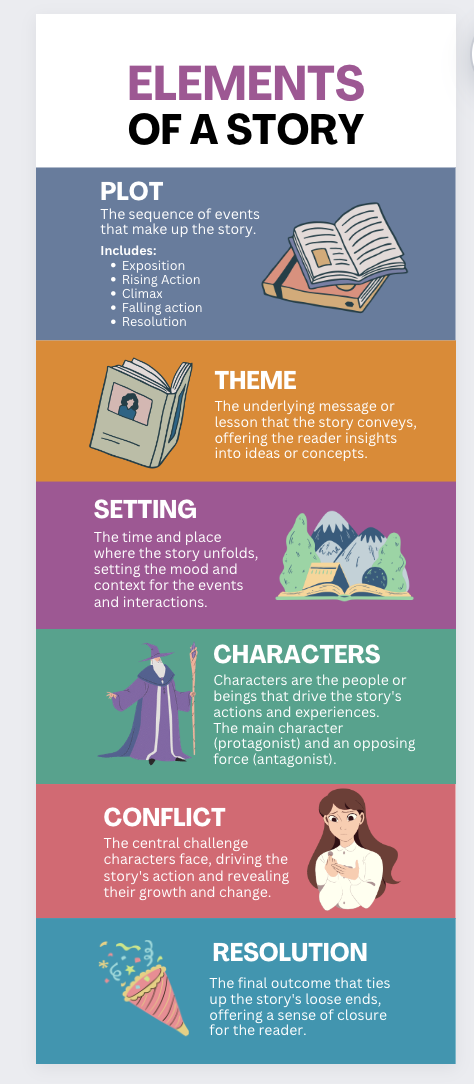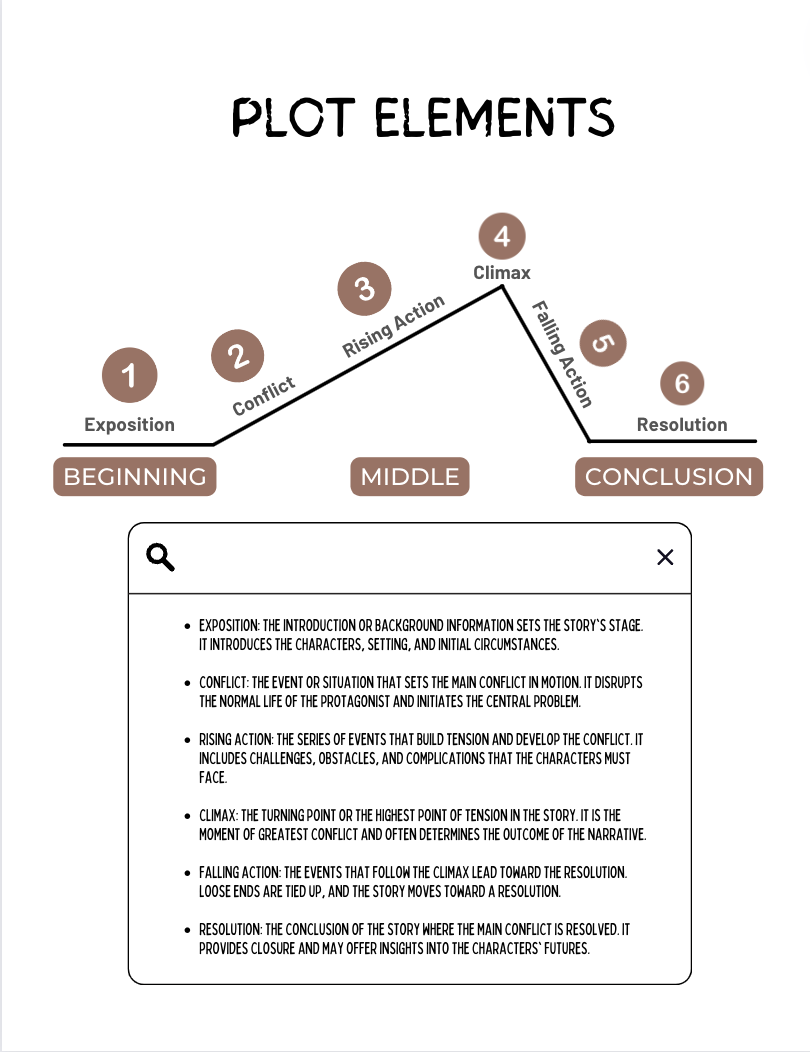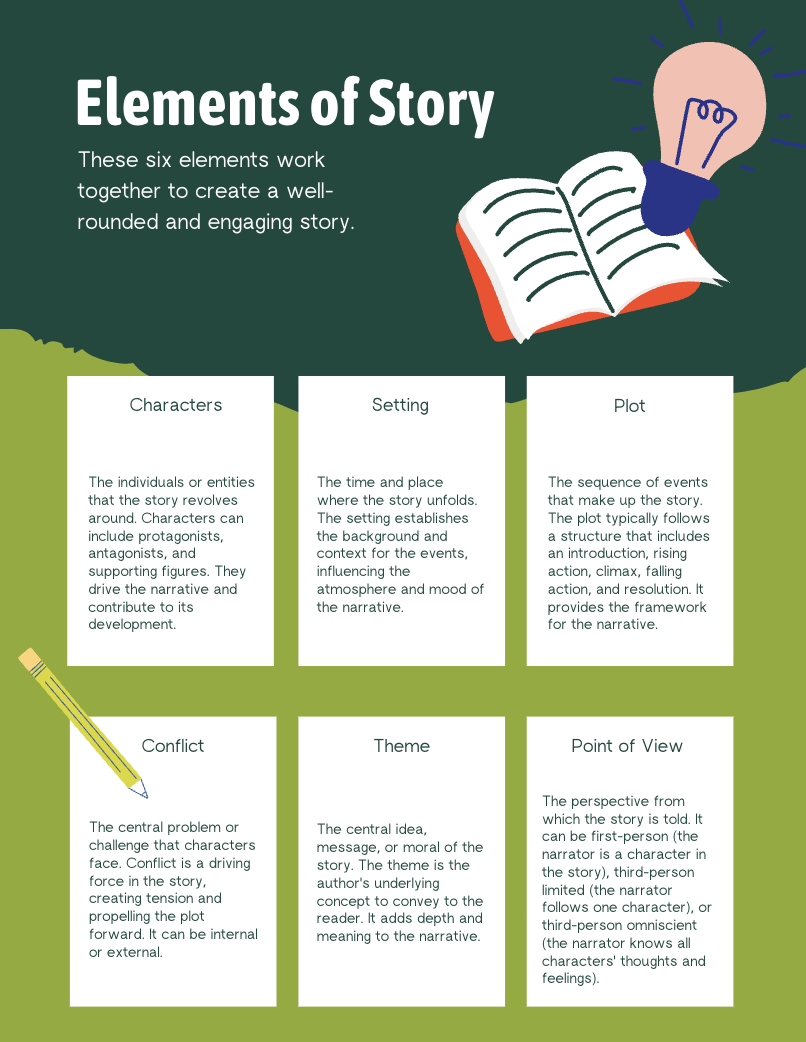Story Elements Story elements are the essential components or building blocks that make up a narrative. These elements contribute to the structure and development of a story. The basic story elements include: Plot: The sequence of events that make up the story. It typically includes an introduction, rising action, climax, falling action, and resolution. Plot elements are the key components that make up the sequence of events in a story. They provide the structure and development of the narrative. The main plot elements include:
Characters: The individuals or entities that the story revolves around. Characters can be protagonists (main characters) or antagonists (characters in opposition to the protagonist). Setting: The time and place where the story unfolds. The setting helps create the atmosphere and context for the narrative. Conflict: The central problem or challenge that the characters face. Conflict is crucial for driving the plot and creating tension. Theme: The central idea, message, or moral of the story. It's the underlying concept that the author wants to convey to the reader. Point of View: The perspective from which the story is told. It can be first-person (narrator is a character in the story), third-person limited (narrator is external but follows one character), or third-person omniscient (narrator knows all characters' thoughts and feelings). Tone: The author's attitude toward the subject matter or the audience. Tone can be serious, humorous, suspenseful, etc. Style: The author's unique way of expressing ideas through word choice, sentence structure, and other literary devices. These elements work together to create a cohesive and engaging narrative. Different stories may emphasize certain elements more than others, depending on the genre, style, and purpose of the narrative.
0 Comments
Leave a Reply. |
Myungja Anna KohArtist Categories
All
Archives
July 2024
|
Proudly powered by Weebly




 RSS Feed
RSS Feed